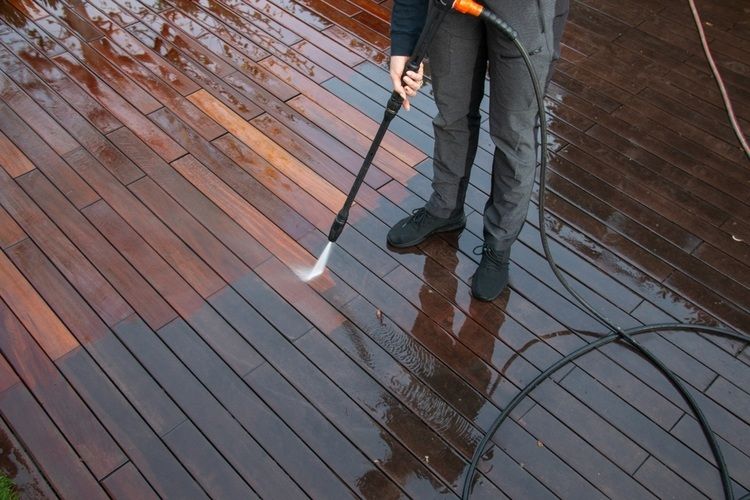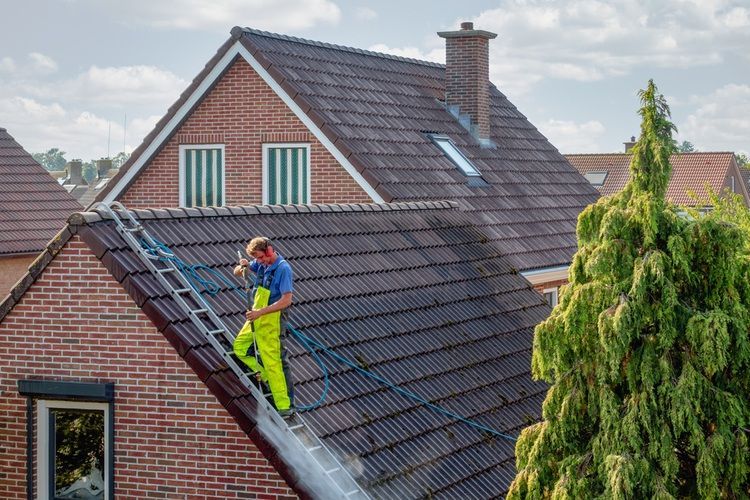Why Are My Gutters Overflowing? Top Causes & How to Fix It
Overflowing gutters are more than just an eyesore—they're a warning sign that something's wrong. If you've noticed water spilling over the sides of your gutters during a Suffolk rainstorm, it's time to investigate before small issues become expensive problems.
At
R&R Pressure Washing, we've seen firsthand how neglected
gutters can lead to major damage to homes in our area.
In this blog, we'll walk you through the most common reasons your gutters might be overflowing—and how you can fix (and prevent) the problem.
Why Gutters Matter
Before we discuss the causes, let's consider why gutters are so important. Your gutter system collects rainwater from your roof and channels it safely away from your home's foundation.
When everything works properly, water flows through the downspouts and drains away from your siding, basement, and landscaping.
But when gutters overflow, that water has nowhere to go, so it pours down the sides of your home, seeps into your foundation, or erodes your yard. Over time, this can lead to:
- Mold and mildew growth
- Rotting fascia boards and roof edges
- Cracked foundations
- Flooded basements
- Stained siding and brick
In short, gutter overflow is a problem that you need to address. Let's break down what's causing it.
Top Reasons Gutters Overflow
Clogged Gutters and Downspouts
This is by far the most common cause. Leaves, twigs, pine needles, dirt, and even bird nests can clog gutters and downspouts, causing water to back up and spill over the edges.
Here in Suffolk, we get a mix of seasonal debris, especially in the fall and spring. Clogs are almost inevitable if you don't clean your gutters at least twice a year.
How to Fix It:
- Clean your gutters by hand or use a garden hose with a gutter attachment.
- Flush out downspouts to ensure proper water flow.
- We recommend hiring a professional gutter cleaning service for safety and ease, especially for multi-story homes or steep roofs.
Improper Gutter Slope
Gutters must be slightly angled (or "pitched") toward the downspouts. Water won't drain effectively if they're too flat or sloping incorrectly. Instead, it will pool and eventually overflow.
Over time, gutter brackets can loosen due to weather or weight from debris, changing the angle of your system.
How to Fix It:
- Use a level to check the slope. Gutters should drop about 1/4 inch for every 10 feet.
- Re-secure or adjust gutter hangers and brackets as needed.
- If the issue is widespread, it may be time for a full gutter replacement or professional adjustment.
Insufficient or Blocked Downspouts
Even if your gutters are clean and sloped correctly, they won't drain properly if the downspouts are too small or too few for your roof size. Similarly, a clogged or crushed downspout can prevent water from flowing freely.
How to Fix It:
- Make sure each downspout is clear and in good condition.
- Consider adding additional downspouts for large roof areas or high-rainfall zones.
- Replace undersized downspouts with wider ones to handle more water.
Debris on the Roof
This is one thing homeowners often overlook. When debris builds up on your roof, especially in valleys and corners, it washes directly into the gutters during storms, causing quick clogs and overflow. In Suffolk, with a mix of pine and oak trees, roof debris can accumulate fast.
How to Fix It:
- Regularly clean your roof or hire a professional roof-cleaning service.
- Install gutter guards or screens to reduce the amount of debris that enters your gutters.
- Schedule routine pressure washing to keep your roof and gutters free from buildup.
Damaged or Warped Gutters
Over time, gutters can warp, rust, or pull away from the fascia board. When this happens, they may sag in places, allowing water to pool and spill over. Gutter seams can also leak if the caulking deteriorates.
How to Fix It:
- Inspect your gutters for rust, cracks, and separation from the house.
- Replace damaged sections or reseal joints.
- Upgrade to seamless gutters if your system is aging or failing frequently.
Preventing Gutter Overflow: What We Recommend
At R&R Pressure Washing, we know that prevention is always better (and cheaper) than a major repair. Here's how we help our clients keep their gutters working year-round:
Routine Gutter Cleaning
We recommend cleaning your gutters at least twice a year—once in the spring and once in the fall. For homes near lots of trees, more frequent cleanings may be necessary.
Gutter Guard Installation
We can install gutter guards that significantly reduce the leaves and debris entering your system. They're a great long-term investment for low-maintenance peace of mind.
Pressure Washing & Roof Cleaning
Keeping your
roof and home exterior clean helps reduce debris buildup and improves your home's appearance. Our
soft washing methods are safe and effective for any surface.
Professional Inspection
Sometimes, the root of the problem isn't visible from the ground. We offer gutter inspections to identify slope issues, hidden clogs, or damaged sections so you can address them before water damage sets in.
Overflowing Gutters? We Can Help
If you have overflowing gutters in Suffolk, VA, don't wait for the damage to pile up. Our experienced team is ready to inspect, clean, and restore your gutter system so it flows as it should.
At R&R Pressure Washing, we treat your home like ours because we live and work in this community. Whether you need a one-time cleaning or want to set up seasonal maintenance, we're here to help.
Get in Touch Today
Protect your home from water damage, mold, and costly repairs.
Contact R&R Pressure Washing for expert gutter cleaning, roof washing, and full exterior services throughout Suffolk and the surrounding areas. Your home deserves the best—and that's exactly what we deliver.





